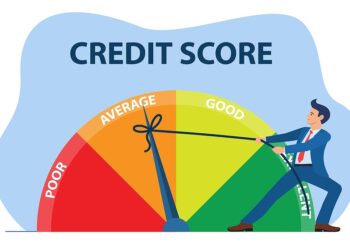Saving money isn’t just about putting cash aside; it’s about strategically growing your wealth to achieve your financial dreams. In today’s dynamic economic landscape, understanding the nuances of smart savings can transform your financial future, leading to substantial returns and unparalleled peace of mind. This comprehensive guide will delve deep into various aspects of intelligent saving, from fundamental principles to advanced investment strategies, ensuring you have the knowledge to make your money work harder for you.
Understanding the Core of Smart Savings

At its heart, smart saving is about intentional financial management. It’s not about deprivation, but rather about making conscious choices that align with your long-term goals. Many people view saving as a restrictive chore, but with the right mindset, it becomes an empowering tool for financial freedom.
A. The Importance of a Clear Financial Vision
Before you even start saving, it’s crucial to define what you’re saving for. Is it a down payment on a house, a child’s education, retirement, or a dream vacation? Having a clear financial vision provides motivation and direction. Without specific goals, savings efforts can feel aimless and easily fall by the wayside.
B. Differentiating Needs from Wants
One of the most powerful initial steps in smart saving is to critically evaluate your spending habits. This involves meticulously categorizing your expenses into needs (essentials like housing, food, utilities, transportation, and healthcare) and wants (discretionary spending like entertainment, dining out, and luxury items). Many financial experts recommend the 50/30/20 rule: 50% of your income for needs, 30% for wants, and 20% for savings and debt repayment. While this is a good starting point, it’s a flexible guideline that can be adjusted based on individual circumstances and financial goals.
C. The Power of Budgeting
A budget isn’t a straitjacket; it’s a financial roadmap. It allows you to track your income and expenses, identify areas where you can cut back, and allocate funds purposefully towards your savings goals. There are various budgeting methods, from traditional pen-and-paper tracking to advanced digital apps. The key is to find a system that works for you and to stick with it consistently. Regular review of your budget (monthly or quarterly) is essential to ensure it remains aligned with your financial reality and goals.
Building a Strong Financial Foundation
Before venturing into more aggressive investment strategies, it’s paramount to establish a robust financial foundation. This acts as a safety net, protecting you from unexpected life events and preventing you from derailing your savings efforts.
A. Emergency Fund
An emergency fund is non-negotiable. This is a readily accessible pool of money designed to cover unforeseen expenses like job loss, medical emergencies, or car repairs. Financial advisors typically recommend having at least three to six months’ worth of essential living expenses saved in an easily accessible account, such as a high-yield savings account. For individuals with less stable incomes or dependents, building an even larger emergency fund (e.g., 9-12 months) might be prudent. The peace of mind an emergency fund provides is invaluable, preventing you from going into debt when unexpected costs arise.
B. Eliminating High-Interest Debt
High-interest debt, such as credit card debt or personal loans, can cripple your ability to save effectively. The interest accrues rapidly, making it difficult to make progress on principal payments. Prioritizing the elimination of high-interest debt is a form of smart saving, as it frees up more of your income to be allocated towards investments. Strategies like the debt snowball (paying off the smallest debt first to gain momentum) or the debt avalanche (paying off the debt with the highest interest rate first to save on interest) can be highly effective.
C. Understanding Your Credit Score
Your credit score plays a significant role in your financial life, influencing everything from loan interest rates to insurance premiums. A good credit score can save you substantial amounts of money over time. Responsible financial habits, such as paying bills on time, keeping credit utilization low, and avoiding opening too many new credit accounts simultaneously, contribute to a healthy credit score. Regularly checking your credit report for errors is also a crucial step in maintaining financial hygiene.
Maximizing Your Savings
While a traditional savings account is a good starting point, to achieve “big returns,” you need to explore avenues that offer higher growth potential. This involves understanding different investment vehicles and aligning them with your risk tolerance and financial timeline.
A. High-Yield Savings Accounts (HYSAs)
For your emergency fund and short-term savings goals, a high-yield savings account (HYSA) is a superior alternative to a traditional savings account. HYSAs typically offer significantly higher interest rates, allowing your money to grow more quickly without taking on investment risk. These accounts are usually FDIC-insured (or equivalent in other countries), providing peace of mind.
B. Certificates of Deposit (CDs)
Certificates of Deposit (CDs) offer a fixed interest rate for a predetermined period (e.g., 6 months, 1 year, 5 years). While your money is locked in for the CD term, they generally offer higher interest rates than HYSAs, especially for longer terms. CDs can be a good option for money you don’t need immediate access to but want to grow at a guaranteed rate. A CD ladder strategy, where you stagger CD maturities, can provide access to funds at regular intervals while still benefiting from higher rates.
C. Exploring the Stock Market
The stock market offers the potential for substantial long-term growth, but it also comes with higher risk. Understanding how the stock market works is essential before investing.
A. Individual Stocks: Investing in individual company stocks involves buying shares of ownership in a specific company. This can offer high returns if the company performs well, but it also carries the highest risk due to the lack of diversification. Extensive research into a company’s financials, industry, and management team is crucial.
B. Mutual Funds: Mutual funds pool money from multiple investors to invest in a diversified portfolio of stocks, bonds, or other securities. They are managed by professional fund managers, making them a good option for investors who prefer a hands-off approach. However, they come with management fees.
C. Exchange-Traded Funds (ETFs): ETFs are similar to mutual funds but trade like individual stocks on an exchange. They often have lower expense ratios than mutual funds and offer excellent diversification. ETFs can track various indexes, sectors, or commodities, providing flexibility for different investment strategies.
D. Index Funds: Index funds are a type of mutual fund or ETF that aims to replicate the performance of a specific market index, such as the S&P 500. They are passively managed, resulting in very low fees, and historically, they have delivered strong long-term returns. For many investors, especially beginners, index funds are an excellent core investment.
D. Understanding Bonds
Bonds represent a loan made by an investor to a borrower (typically a corporation or government entity). In return for the loan, the borrower pays the investor regular interest payments and repays the principal at maturity. Bonds are generally considered less volatile than stocks and can provide a steady income stream, making them a valuable component of a diversified portfolio, especially for risk-averse investors or those approaching retirement.
E. Real Estate
Real estate can be a powerful wealth-building tool, offering potential for appreciation and rental income.
A. Direct Ownership: This involves purchasing properties directly, either for personal residence or as rental properties. While it can offer significant returns, it also requires substantial capital, ongoing maintenance, and management responsibilities.
B. Real Estate Investment Trusts (REITs): REITs allow individuals to invest in large-scale real estate portfolios without owning physical property. They trade like stocks on exchanges and offer a way to gain exposure to the real estate market with greater liquidity and diversification.
C. Crowdfunding: Real estate crowdfunding platforms enable individuals to invest in specific real estate projects with smaller amounts of capital, often providing access to opportunities that were traditionally reserved for institutional investors.
F. Retirement Accounts
Leveraging tax-advantaged retirement accounts is one of the smartest ways to save for your future. These accounts offer significant tax benefits that can dramatically accelerate your wealth accumulation.
A. 401(k)s (and similar employer-sponsored plans): If your employer offers a 401(k) (or a similar plan like a 403(b) or TSP), contribute at least enough to receive any employer match. This is essentially free money and provides an immediate, guaranteed return on your investment. Contributions are typically pre-tax, reducing your taxable income in the present.
B. IRAs (Individual Retirement Arrangements):
- Traditional IRA: Contributions may be tax-deductible, and your investments grow tax-deferred until retirement, when withdrawals are taxed as ordinary income.
- Roth IRA: Contributions are made with after-tax money, but qualified withdrawals in retirement are completely tax-free. This is particularly appealing if you expect to be in a higher tax bracket in retirement.
C. Health Savings Accounts (HSAs): If you have a high-deductible health plan (HDHP), an HSA is a triple tax-advantaged account: contributions are tax-deductible, investments grow tax-free, and qualified medical withdrawals are also tax-free. HSAs can serve as an additional retirement savings vehicle, especially for healthcare costs in later life.
Smart Strategies for Boosting Your Returns

Beyond choosing the right investment vehicles, employing smart strategies can significantly enhance your returns over time.
A. The Magic of Compounding
Compounding is often called the “eighth wonder of the world.” It’s the process where your earnings generate their own earnings. The earlier you start saving and investing, the more time your money has to compound, leading to exponential growth. Even small, consistent contributions can grow into substantial sums over decades due to the power of compounding.
B. Dollar-Cost Averaging
Dollar-cost averaging involves investing a fixed amount of money at regular intervals, regardless of market fluctuations. This strategy helps mitigate risk by averaging out your purchase price over time. When prices are high, your fixed amount buys fewer shares, and when prices are low, it buys more. This systematic approach removes emotional decision-making from investing and can lead to better long-term results.
C. Diversification
Diversification is a fundamental principle of smart investing. It involves spreading your investments across different asset classes (stocks, bonds, real estate, commodities), industries, and geographical regions. This reduces overall risk, as the poor performance of one investment can be offset by the strong performance of another. A well-diversified portfolio is more resilient to market downturns.
D. Regular Portfolio Rebalancing
Over time, the allocation of your investment portfolio can drift from your target due to varying asset performances. Portfolio rebalancing involves adjusting your investments periodically (e.g., annually) to bring them back to your desired asset allocation. This ensures your portfolio remains aligned with your risk tolerance and financial goals. For example, if stocks have performed exceptionally well, you might sell some stock to buy bonds, bringing your portfolio back to its target stock-to-bond ratio.
E. Minimizing Fees and Taxes
Fees and taxes can eat into your returns significantly over the long term.
A. Investment Fees: Pay close attention to expense ratios for mutual funds and ETFs. Even seemingly small fees can have a substantial impact on your net returns over decades. Opt for low-cost index funds and ETFs whenever possible.
B. Tax Efficiency: Utilize tax-advantaged accounts (like 401(k)s and IRAs) to minimize your tax burden. Understand the tax implications of different investments and selling strategies. For instance, holding investments for over a year typically qualifies for lower long-term capital gains tax rates compared to short-term gains.
Behavioral Aspects of Smart Saving
While financial knowledge is critical, the psychological aspects of saving and investing often determine success or failure.
A. Overcoming Instant Gratification
In a consumer-driven society, instant gratification can be a significant hurdle to saving. The desire for immediate pleasure often outweighs the foresight needed for long-term financial security. Developing self-discipline and finding ways to reward yourself for reaching financial milestones can help overcome this challenge.
B. Avoiding Emotional Investing
Market fluctuations can trigger strong emotions – fear during downturns and greed during upturns. Emotional investing, characterized by buying high and selling low, is a common pitfall. Sticking to a well-thought-out investment plan, practicing dollar-cost averaging, and focusing on long-term goals can help you avoid making impulsive decisions based on market sentiment.
C. Continuous Learning and Adaptation
The financial world is constantly evolving. Staying informed about economic trends, new investment opportunities, and changes in tax laws is crucial. Continuous learning empowers you to adapt your strategies as needed and make informed decisions. Read reputable financial news, listen to educational podcasts, and consider taking personal finance courses.
D. The Value of Professional Guidance
While this guide provides extensive information, a qualified financial advisor can offer personalized guidance tailored to your unique situation, goals, and risk tolerance. They can help you create a comprehensive financial plan, choose appropriate investments, and navigate complex financial decisions. When choosing an advisor, look for fiduciaries who are legally obligated to act in your best interest.
Conclusion
Achieving “Smart Savings, Big Returns” is a journey, not a destination. It requires discipline, continuous learning, and a proactive approach to your finances. By understanding your financial goals, building a strong foundation, diversifying your investments, and leveraging the power of compounding, you can steadily grow your wealth and secure a brighter financial future. Remember, every small saving decision you make today contributes to the big returns you’ll see tomorrow. Start now, stay consistent, and watch your financial dreams become a reality.












